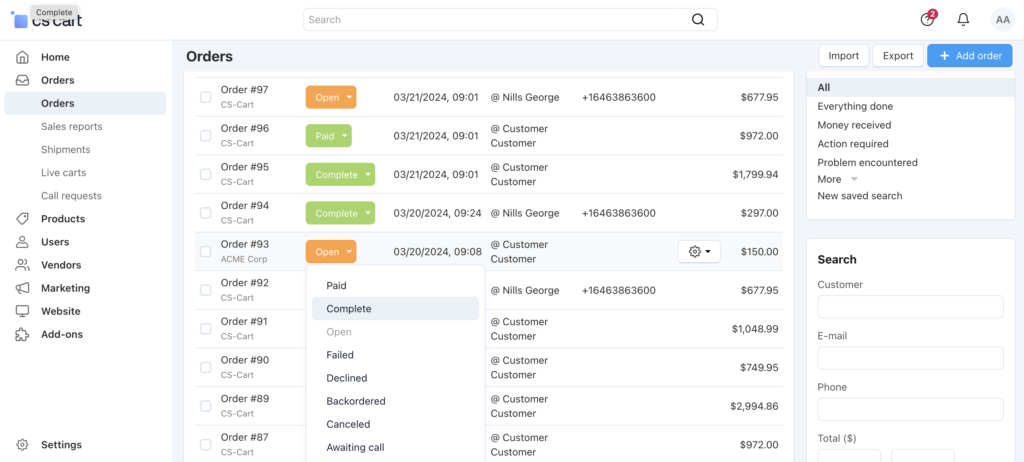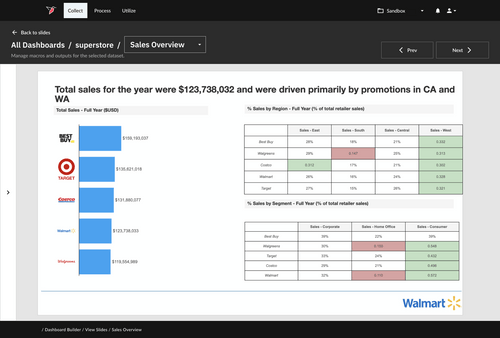Efficient Inventory Management for E-commerce Success: Tips and Best Practices
The right inventory management system can help you make the most of your eСommerce business. From sourcing and storing to organizing and selling, an efficient inventory management process can help you promote optimal stock levels at the right price.
With efficient inventory management, you’ll be able to …
- Meet customer demand.
- Minimize inventory costs.
- Prevent excess inventory.
With inventory management techniques, you’ll have systems to oversee both raw materials and finished products. No more information silos or missed opportunities. You’ll also be able to regulate warehousing and item processing.
In this quick guide, we’re revealing several tips and best practices you can use for efficient inventory management.
Curious to learn more?
Keep reading to learn how to optimize your inventory systems.
Understand your inventory
Maintain inventory visibility at all times to make sure you have what you need when you need it.
This is essential to meeting demand, promoting customer satisfaction, and discovering dead inventory. For instance, if a wholesale customer wants to submit a bulk picture frame order, you’ll be able to quickly review which picture frame materials you have in stock to make sure you can fulfill the order.

You can better understand your inventory by:
- Implementing robust tracking systems
- Manual stock counting
- Categorizing products
- Organizing SKUs
Implement demand forecasting
Forecasting demand accurately is crucial for optimizing your inventory levels and making sure you have the right products in stock.
By using methods like historical data analysis and researching current market trends, you can anticipate customer needs and demand fluctuations.
For instance, if you sell online prescriptions and health products, you can forecast demand for Ozempic versus alternatives to Ozempic. This can help ensure you have enough products on the shelves to meet customer demand.

Embrace automation (but don’t omit manual stock counting)
Consumers today anticipate fast 1–2-day deliveries, seamless omnichannel interactions, diverse product offerings, and dynamic product catalogs. These expectations require automated, intelligent tools to achieve them efficiently at scale.
That’s why it’s important to leverage sales automation tools to streamline inventory management.
With inventory software, you can optimize your order fulfillment and stock replenishment processes.
You can also use AI-driven solutions to access real-time data to refine your inventory strategies and enhance customer experiences.
This automated approach not only optimizes your operations but also transforms your enterprise supply chain management practices, setting a new standard for efficiency and innovation.
For instance, you can also use AI tools to:
- Apply dynamic pricing strategies (auto-adjust prices in real time based on market demand and competition)
- Offer personalized product suggestions to your customers
- Deliver customer service via AI-assisted chatbots
- Generate e-commerce sales overviews
- Optimize product delivery routes
- Enhance demand forecasting
- Analyze historical data
- Prevent fraud

Pro-Tip: Manual stock counting also serves as a valuable complement to digital inventory systems — especially when monitoring small quantities of high-value items.
Conducting physical stock checks helps you identify outdated, missing, or damaged inventory, providing an extra layer of security and accuracy.
Refine your warehouse layout
Having a well-organized and efficient warehouse layout helps you optimize your operations.
Strategic warehouse design not only improves your workflows—it also enhances productivity.
You can streamline your warehouse operations and boost efficiency by implementing techniques like ABC analysis to prioritize items and optimizing pick-and-pack processes for faster fulfillment.
Here are some more optimal warehouse layout tips:
- Use vertical space effectively with mezzanine systems (see definition below) or high-reaching storage solutions
- Establish designated zones for different product categories to streamline picking and packing processes
- Regularly review and adjust layout based on changing inventory needs and operational efficiency
- Implement clear labeling and signage for easy navigation and stock location
*Mezzanine systems are elevated platforms or intermediate floors constructed within a building to create additional space.
Establish effective inventory control policies
Avoid stock shortages and excess inventory with inventory control policies.
Key tactics include maintaining appropriate safety stock, setting precise reorder thresholds, and regularly conducting audits.
Introducing established management methodologies like Kaizen, Lean, or Six Sigma can also help you optimize inventory processes. These methodologies help foster a culture of continuous improvement for different business goals.
Other inventory control policy examples include:
- Using intelligent data tools to oversee inventory and refine purchasing procedures
- Collaborating closely with suppliers to negotiate terms
- Fine-tuning safety stock and reorder points
- Aligning purchases with customer demand
- Strengthening relationships with suppliers
- Expediting restocking procedures
- Removing outdated stock
- Managing order volumes
Bonus Tip: Keep personal and business financials separate
Maintaining a clear separation between personal and business finances is crucial for e-commerce success.
Consider opening an LLC business bank account to streamline financial operations and improve control over your finances.
An LLC business bank account can help you optimize budgeting processes for inventory procurement by providing a dedicated space specifically for business expenses.
Separating personal and business finances makes it easier to allocate resources exclusively for inventory-related purchases. As a result, you’ll be able to make informed decisions quickly, optimize operational efficiency, and maintain a well-structured budget for inventory acquisition.
Wrap up
Prevent disruptions in inventory flow and maintain a seamless supply chain with efficient inventory management practices.
If you’re ready to refine your e-commerce operations, save this article and share it with your team.
For good measure, here’s a quick summary of the tips and best practices we shared today:
- Understand your inventory
- Implement demand forecasting
- Embrace automation (but don’t omit manual stock counting)
- Refine your warehouse layout
- Establish effective inventory control policies
- Keep personal and business financials separate
Before applying these tips, create an inventory management end goal to help inform your optimization process.
For instance, are you looking to stay three steps ahead of bulk wholesale order requests? Do you want to create a smart high-level inventory overview system?
Knowing your goals can help you focus your efforts where they matter most.
Next, conduct an inventory management audit to uncover what’s working well and what needs refining. Double up on processes that are helping you achieve optimal inventory management results — and don’t be afraid to let go of systems that are no longer serving you.
Then, fill in the gaps with the tips we shared today.
That’s it for now.
PS: On the hunt for a marketplace or online store builder? With CS-Cart, you can start your marketplace within three months—or build a free shopping cart website. Request a marketplace demo or store demo to learn more today.

Author Bio:
Luca Ramassa is Outreach Specialist at LeadsBridge, passionate about Marketing and Technology. His goal is to help companies improve their online presence and communication strategy.
Yan Anderson is the Head of Content Marketing at CS-Cart with over 10 years of experience in the eCommerce industry. He's passionate about explaining complicated things in simple terms. Yan has expertise in building, running and growing eCommerce marketplaces. He loves to educate people about best practices, new technologies, and trends in the global eCommerce industry.

